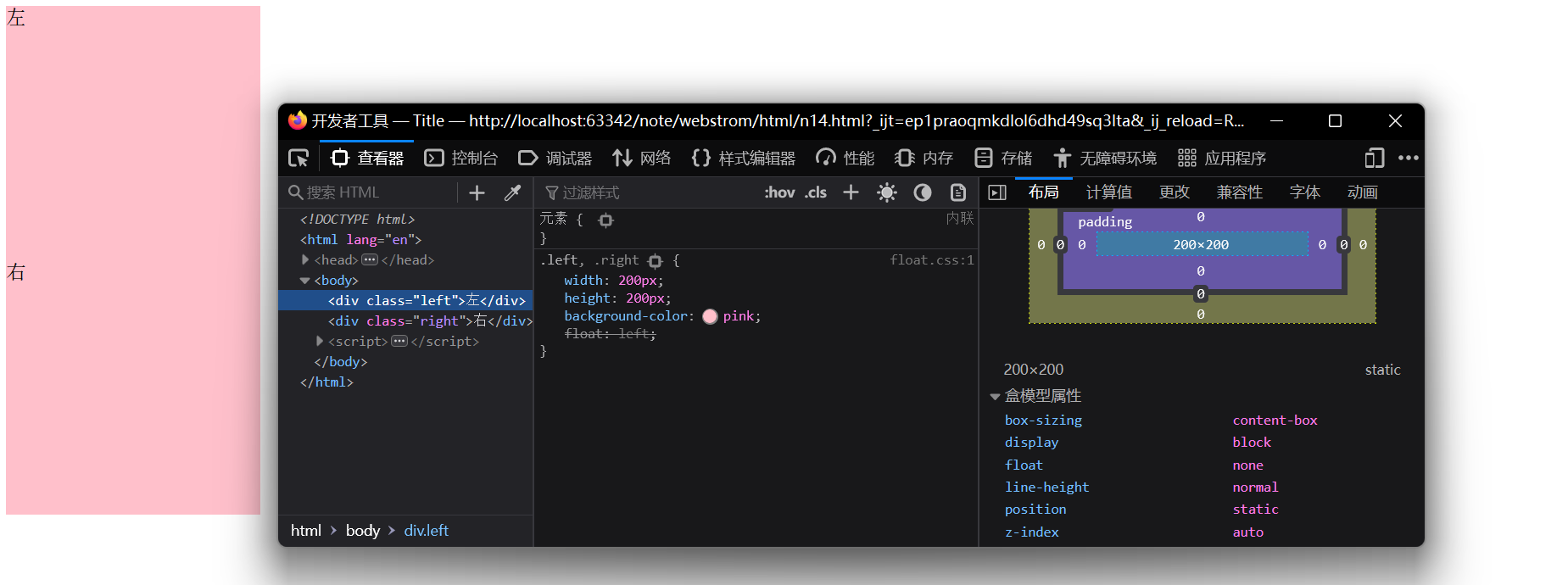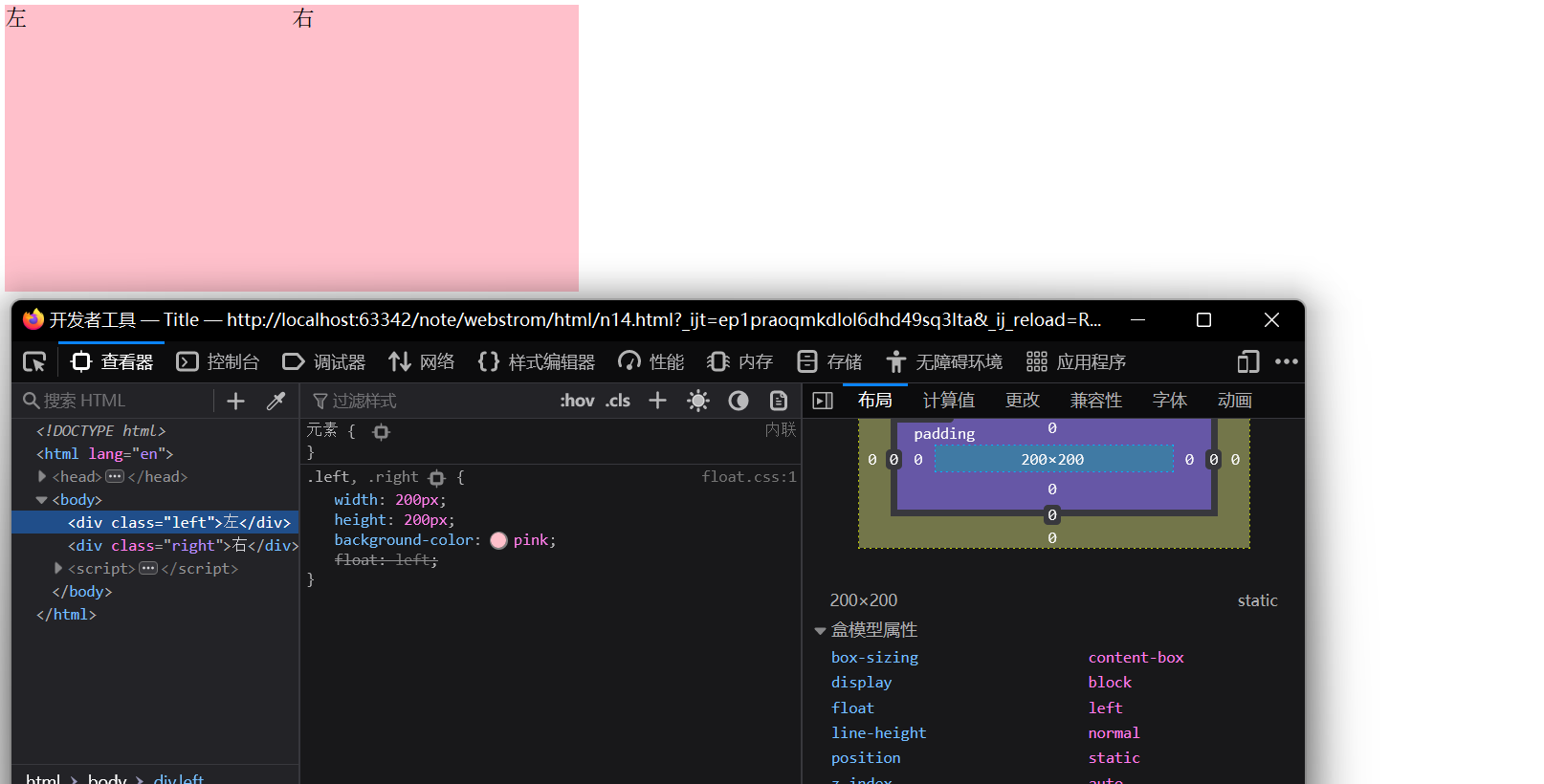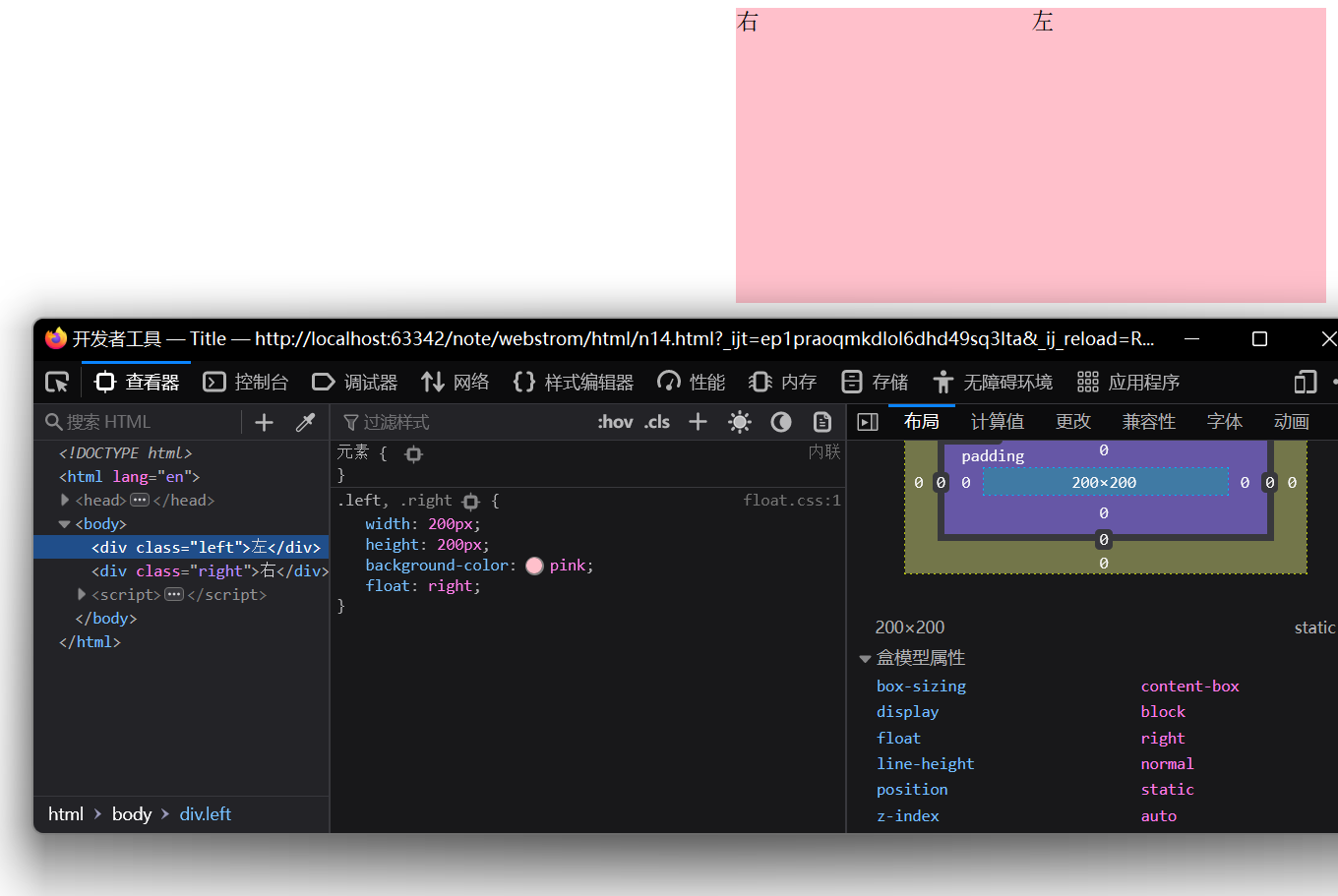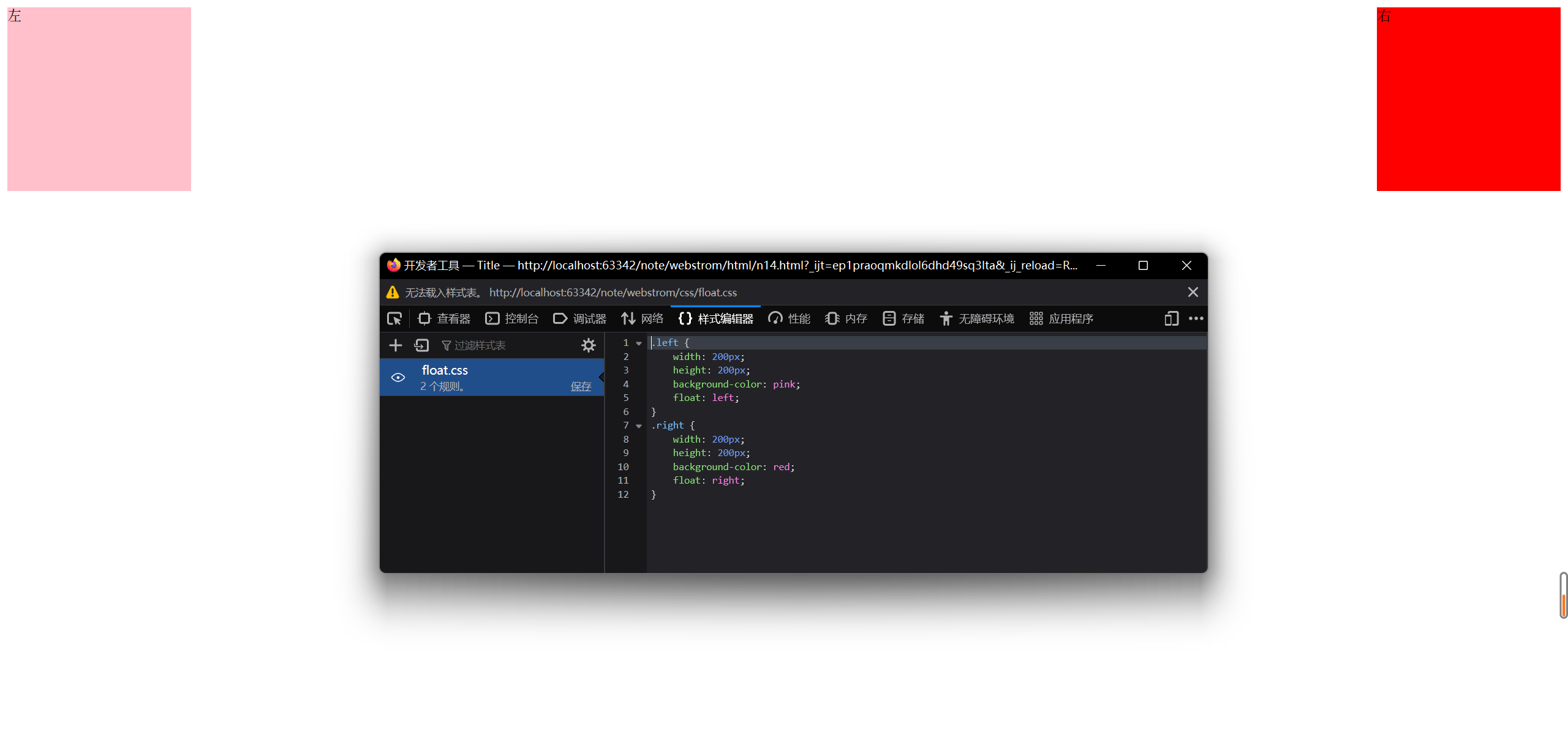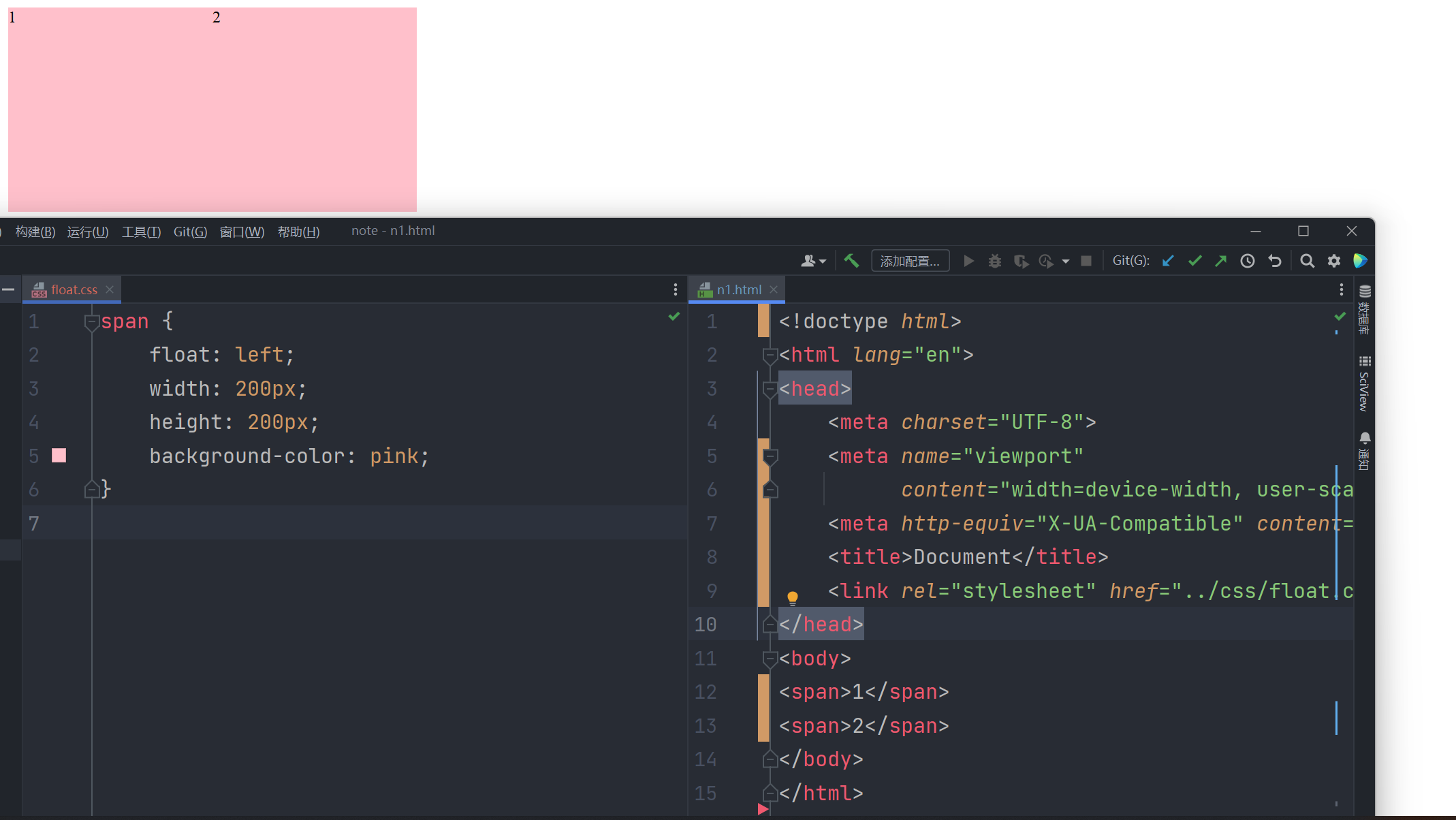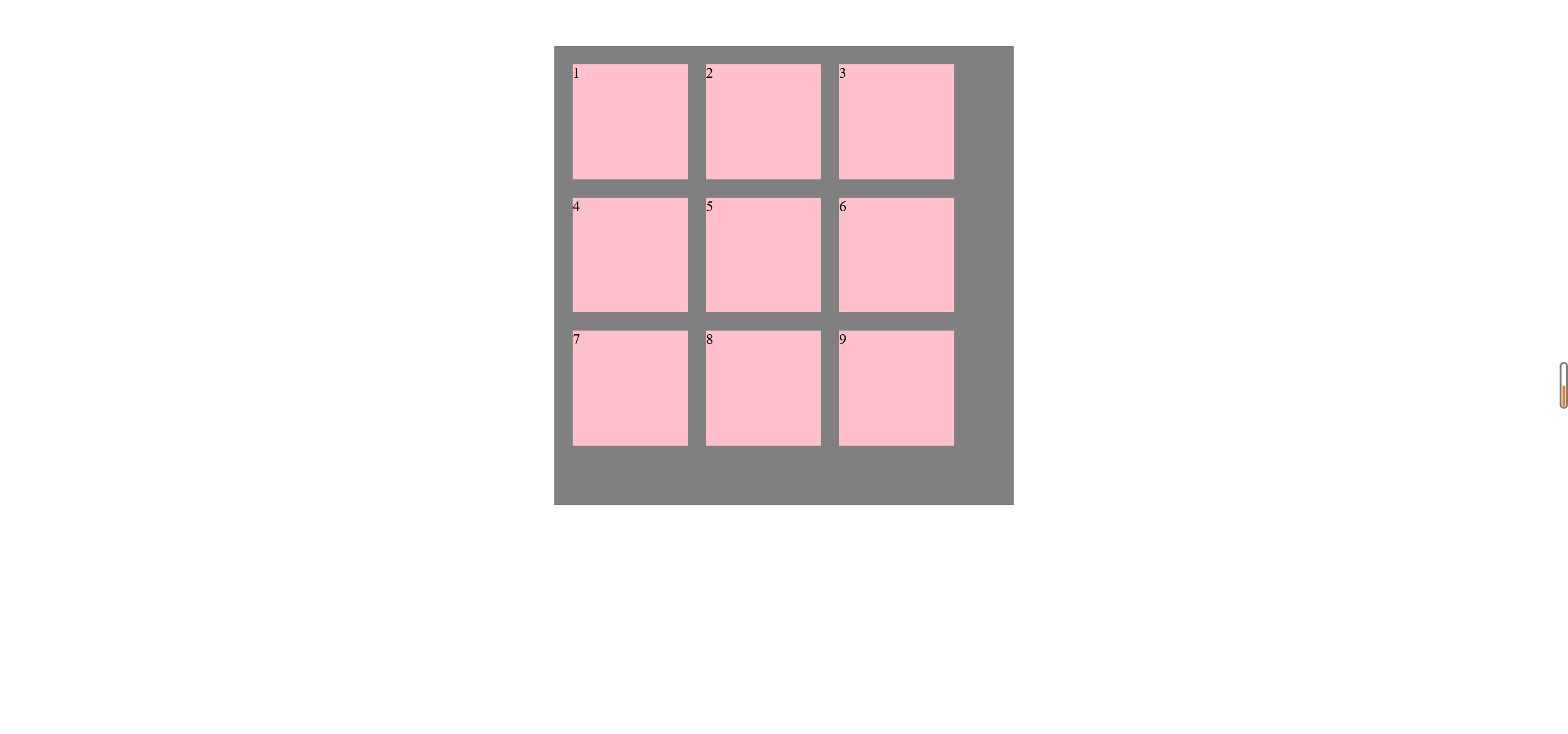float
float属性用于创建浮动框,直到左边缘或者右边缘以及包含块或者另一个浮动框的边缘
不加
float属性的时候
效果如下
加
float属性(左浮动)的时候
效果如下
加
float属性(右浮动)的时候
效果如下
加
float属性(左右浮动)的时候
效果如下
浮动特性-脱标
- 浮动的元素会脱离标准流
- 浮动的元素会一行内显示并且元素顶部对齐
- 浮动的盒子不再保留原先的位置
浮动特性-浮动元素-一行显示
<!DOCTYPE html>
<html lang="en">
<head>
<meta charset="UTF-8">
<title>Title</title>
<link rel="stylesheet" href="../css/float.css">
</head>
<body>
<div class="right_0">左</div>
<div class="right_1">右1</div>
<div class="right_2">右2</div>
</body>
</html>
css和页面效果如下
如果多个盒子都设置了浮动,那么它们会按照属性值一行内显示并且顶端对齐排列
浮动特性-浮动元素具有行内块元素特点
如果行内元素有了浮动,则不需要转换为块级元素,就可以直接给高度和宽度
html
<!doctype html>
<html lang="en">
<head>
<meta charset="UTF-8">
<meta name="viewport"
content="width=device-width, user-scalable=no, initial-scale=1.0, maximum-scale=1.0, minimum-scale=1.0">
<meta http-equiv="X-UA-Compatible" content="ie=edge">
<title>Document</title>
<link rel="stylesheet" href="../css/float.css">
</head>
<body>
<span>1</span>
<span>2</span>
</body>
</html>
css
span {
float: left;
width: 200px;
height: 200px;
background-color: pink;
}
行内块元素添加float属性后效果:
浮动元素经常和标准流父级搭配使用
为了约束浮动元素的位置,我们网页布局一般采用的策略是:
先用标准流的父元素排列上下的位置,之后内部子元素采取浮动排列左右位置,符合网页布局第一准则
例子:
<!doctype html>
<html lang="en">
<head>
<meta charset="UTF-8">
<meta name="viewport"
content="width=device-width, user-scalable=no, initial-scale=1.0, maximum-scale=1.0, minimum-scale=1.0">
<meta http-equiv="X-UA-Compatible" content="ie=edge">
<title>Document</title>
<link rel="stylesheet" href="../css/float.css">
</head>
<body>
<div class="father">
<div class="son">1</div>
<div class="son">2</div>
<div class="son">3</div>
<div class="son">4</div>
<div class="son">5</div>
<div class="son">6</div>
<div class="son">7</div>
<div class="son">8</div>
<div class="son">9</div>
</div>
</body>
</html>
.father {
width: 500px;
height: 500px;
background-color: gray;
margin: 0 auto;
position: absolute;
top: 50px;
bottom: 0;
left: 0;
right: 0;
}
.son {
float: left;
width: 125px;
height: 125px;
background-color: pink;
margin-left: 20px;
margin-top: 20px;
}
像上面这样,我们就再标准流的父盒子里创建了两个子盒子
效果图:

